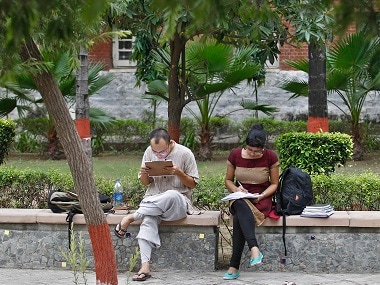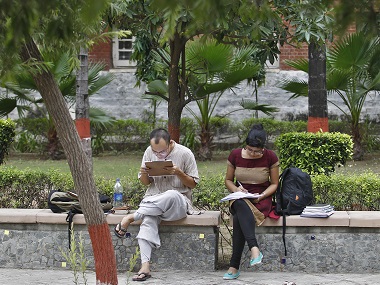Days after the Supreme Court dismissed a special leave petition filed by the Ministry of Human Resource Development (HRD) against the imposition of what is popularly known as the 13-point roster system — a new method of appointing teaching faculty — the government, on Tuesday, said it may come out with an ordinance on faculty quota in colleges. The decision comes after the top court quashed the review petition the government filed after its leave petition was rejected. The JD(U), on Monday, had asked the Central government to bring forth an ordinance to restore the earlier 200-point roster system. Union HRD minister Prakash Javadekar said the Centre was in “favour of the 200-point roster” and was likely to make a decision in the matter in two days at a Cabinet meeting.
Union HRD Minister Prakash Javadekar: We have a system of 200 point roster where university is regarded as one unit but the court decided against it & directed for departmental roster. We never agreed to this position so, we filed a review petition that also stands dismissed now. pic.twitter.com/yoCEbwlru4
— ANI (@ANI) March 5, 2019
What is a 200-point roster? In the 200-point roster system, 99 posts were reserved for SC, ST and OBC communities. The remaining 101 posts were kept for the unreserved. In case of a deficit in reserved seats in one department, more people from reserved communities could be employed in other departments at the university under this system. Doing so ensured that the constitutionally mandated reservation is maintained. However, in the 13-point system, the first, second, third, fifth, and sixth posts will be unreserved in a department, while the fourth will be reserved for OBCs, the seventh for SCs, the 14th post for STs and the eighth and 12th for OBCs. The ninth, 10th and 11th will be unreserved. [caption id=“attachment_2893754” align=“alignleft” width=“380”]  Representational image. Reuters[/caption] The problem arises when the size of departments are small. In India, there are a few departments where there are more than 14 faculty positions, and in such cases, it becomes difficult to ensure reservation to all SC/ST/OBC posts. In departments with fewer than four available positions, no reserved seat will be created at all. Similarly, for departments with fewer than seven faculty positions, there will be no SC and ST position. In departments with fewer than 14 faculty positions, there will be no ST faculty. According to a report submitted by Banaras Hindu University to the HRD ministry in 2018, if the university were to use the 13-point roster, posts reserved for SCs would be reduced by half, those for STs by almost 80 percent and those for OBC teachers by 30 percent. Also, if the new 10 percent reservation for the economically backward is implemented, SC, ST and OBC teachers could be completed wiped out from all Central universities. Developments in court The latest development on a possible ordinance comes amid protests by university faculty members and student bodies after the Supreme Court, on 22 January, dismissed the special leave petition that had sought to restore the earlier mechanism of faculty reservation. The bench had upheld an order of the Allahabad High Court, which had ruled that reservation in faculty positions in universities should be calculated department-wise, not by taking the total number of seats at the institute as the basis. Soon after the Supreme Court’s dismissal order was announced, teachers and students in Delhi had held a march from Mandi House to Jantar Mantar in the national capital against the order. The HRD ministry had filed the special leave petition in April 2018, following a political furore over the University Grants Commission’s (UGC) 5 March, 2018, order that said the number of reserved faculty posts across universities and colleges would be calculated department-wise. A bench of Justice UU Lalit and Justice Indira Banerjee had rejected the Centre’s plea challenging the 7 April, 2017, order of the Allahabad High Court. In February 2008, the UGC had advised the Banaras Hindu University to follow the roster system cadre wise instead of applying it department wise. The university had then issued an advertisement in July 2016 to fill the vacancies of various teaching and equivalent posts. But the move was challenged in the Allahabad High Court, which then directed universities to make fresh rosters, taking department/subject as a unit, not the university.


)

)
)
)
)
)
)
)
)



